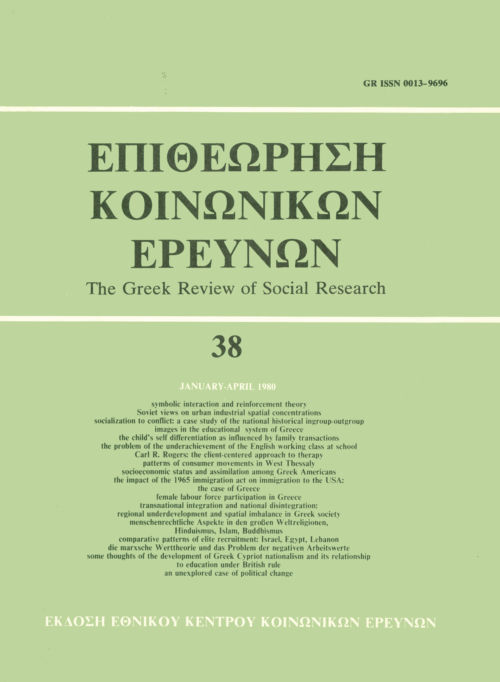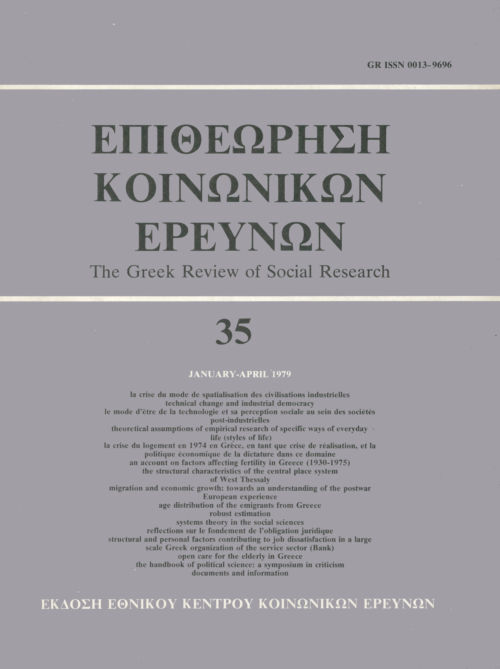Patterns of consumer movements in west Thessaly
Abstract
The structure of the settlement system of West Thessaly has been
shown to consist of a well-defined four-level hierarchy, with the most
important places being the two nomos seats of Trikala and Kardhitsa,
and below them six smaller urban centres. This paper examines the
extent to which the structure is reflected in the functioning of the
system as revealed by patterns of consumer movements. Using information
collected by circulating questionnaires in the region via the
secondary schools, the patterns of movement for thirteen goods and
services are described. Differences in the average distances travelled
for different goods and services were found, reflecting the differential
use made of the four levels of the hierarchy by consumers. The provision
of goods down to relatively low levels of the settlement hierarchy
in Greece means that intensive use is made of small urban settlements
for the purchase of many consumer durables. Only for the
highest order functions do Trikala and Kardhitsa dominate within
the region, and for these large centres outside West Thessaly
(especially Larissa, Athens and Thessaloniki), exert an influence.
After considering briefly the theoretical aspects of these findings, the
paper concludes with an assessment of their implications for town
and regional planning.
Article Details
- How to Cite
-
Bennison, D. J. (1980). Patterns of consumer movements in west Thessaly. The Greek Review of Social Research, 38, 73–86. https://doi.org/10.12681/grsr.263
- Issue
- 1980: 38
- Section
- Articles

This work is licensed under a Creative Commons Attribution-NonCommercial 4.0 International License.
Authors who publish with this journal agree to the following terms:
- Authors retain copyright and grant the journal right of first publication with the work simultaneously licensed under a Creative Commons Attribution Non-Commercial License that allows others to share the work with an acknowledgement of the work's authorship and initial publication in this journal.
- Authors are able to enter into separate, additional contractual arrangements for the non-exclusive distribution of the journal's published version of the work (e.g. post it to an institutional repository or publish it in a book), with an acknowledgement of its initial publication in this journal.
- Authors are permitted and encouraged to post their work online (preferably in institutional repositories or on their website) prior to and during the submission process, as it can lead to productive exchanges, as well as earlier and greater citation of published work (See The Effect of Open Access).




